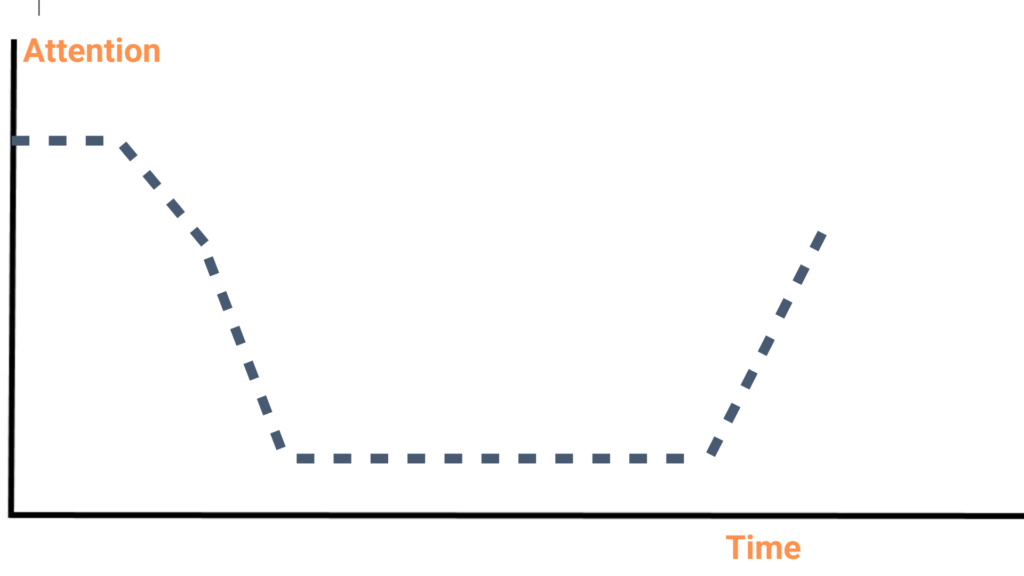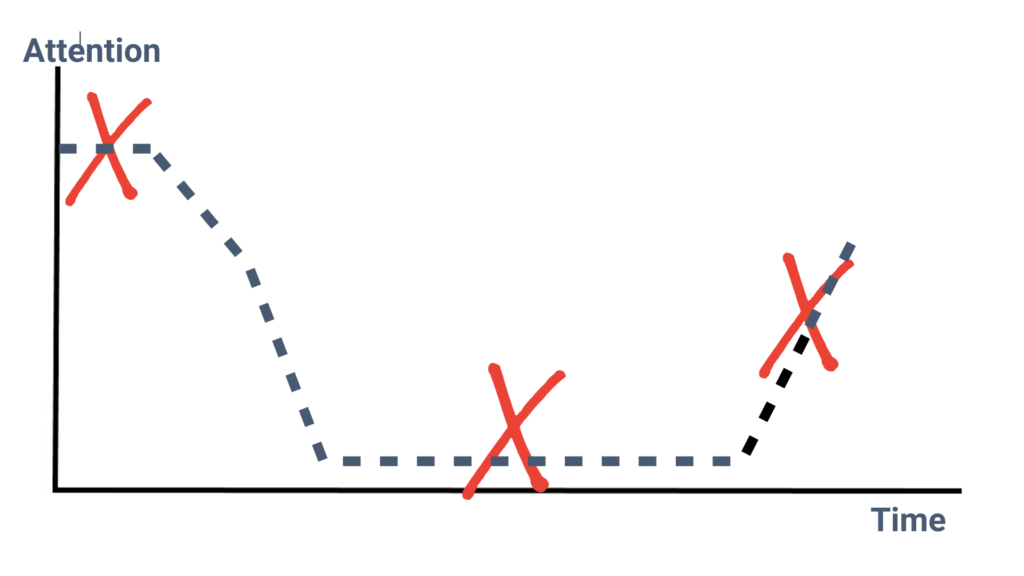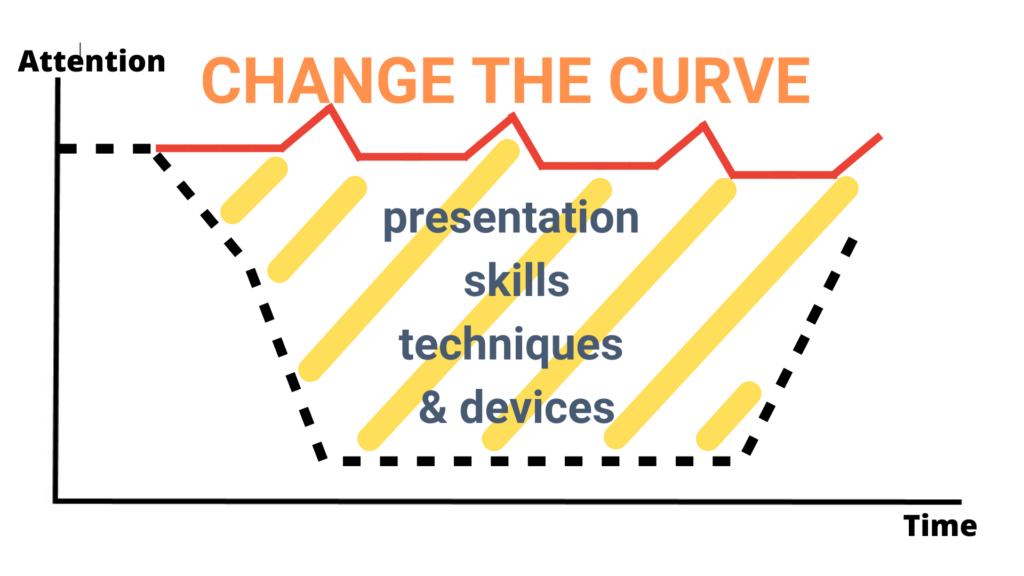When my book, “Presentations in English”, was first published back in 2008, I included the Attention Listening Curve in the first exercise in the first chapter, “Lay Solid Foundations”. There are aspects of the book that I would change today and my training and teaching have developed over the years, but I still teach the Attention Listening Curve towards the beginning of any course or seminar on presentations.

Why?
Here are 6 good reasons:
1. It’s Fundamental
Getting and retaining the audience’s attention is fundamental to delivering a good competent presentation. Having mastery of fundamental aspects – solid foundations – is the foundation stone to becoming a great presenter. Learning about attention and where it is naturally high and low in a presentation teaches students why we prepare and design presentations in certain ways and with certain conventions and techniques.

2. Understand the Listener
Presentation is about building the relationship between the presenter and the listening audience. Audiences expect and they are expected to listen for a longer time. It is therefore essential that a presenter knows how people listen. There are many potential distractions for listeners – e.g. physical state, personal issues, work issues – so that grabbing attention is vital. Nevertheless, attention is only a first step in listening but again understanding how attention naturally rises and falls is fundamental if a presenter wants to get the listeners on the road to the final stage of listening which is remembering (the right) content and message.
3. Understand the Start and Finish
Learning about the Attention Listening Curve helps students to understand why the start and finish phases of a presentation are really important. There are conventions to these phases but students need to understand the reasons behind these conventions and the impact that can be created at the start and finish. Students need to understand the theory so that gain maximum benefit from practice and feedback.
4. Understand the Reason for Techniques
Attention can naturally dip for longer periods in presentations. This is natural but certainly not desirable for the presenter. This is where the skill of being able to apply relevant techniques, rhetoric and devices comes in. Presenters use techniques for certain reasons and ultimately to convey their message. They do not use certain techniques for the sake of using techniques or because they feel that using techniques will gain points in an exam but intentionally with purpose to grab attention and take the audience through the steps of listening.

5. It’s More Than Phrases
Likewise, presentation is not or shouldn’t be about just learning banks of phrases and reiterating them. For example, the skill of signposting is linked to the Attention Listening Curve as it is about putting structure into a presentation in order to raise the curve. Attention is peaked when a signpost is used and this helps the presenter put across content, meaning and message. It can thus be argued the use of the technique in the right place at the right time is more important than learning a fancy phrase. A signpost can be as simple as “That’s it. Next …” and have the desired effect. Our students should therefore be demonstrating they understand the use of the technique and phrase rather than just showing they have learnt some phrase or other. Knowing the Attention Listening Curve allows them to do this.
6. Our Aims
Surely, our aim is to teach our students a life skill and understanding the fundamentals puts the students on the right road in the right direction and become the tomorrow’s great presenters.
